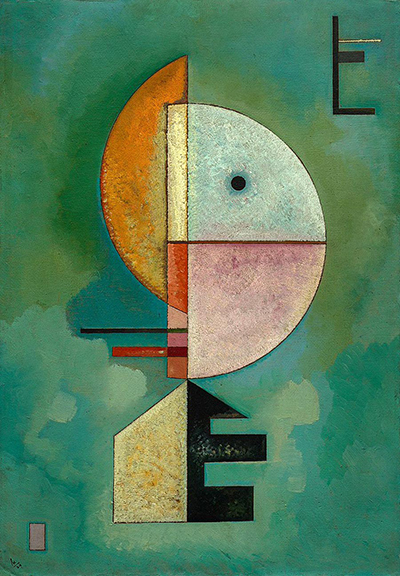Upwards is one of Kandinsky's paintings from during his time in Dessau and was completed in 1929. Dessau itself is an important German region that lies in the east of the country.
This abstract piece is one of his most simplest artworks, combining just a few circles with straight lines of an angle. As with many of his paintings during this period, it maybe necessary to study the history of the piece in greater detail in order to truly understand the minimalist composition. Kandinsky once wrote that he did not intend to produce form, rather he went with his feelings and the objects would form themselves. We immediately draw a comparison with Paul Klee's Senecio, and from that conclude that this is likely to be a human head in abstract construction.
Kandinsky completed this painting as oil on cardboard and another aspect to notice about this composition is the careful balancing of the circular shape above the triangular, sharpened base. It gives a sense of tension to this painting, whilst also being shaped similar to a neck and head. The small dark circle within the larger lightly coloured circle also gives an impression of an eye looking straight back at the viewer. This is surely no accident, but with little information avilable on Upwards, it is hard to confirm either way.
There is also a planetary theme to this artwork, it really does leave questioning the motivation and ideas behind it. The shaded sections give the impression of the surface of a planet or moon. Kandinsky's career was varied in it's use of modern landscapes and geometrical abstract pieces like the one found here. This artist was capable of producing traditional art but turned his back on these techniques from a very early stage in his career, passionately fighting for a future where abstract art could thrive. He was famously lauded by the Bauhaus movement, who devoted an entire publication to the highlights of his career at that point, but later himself and Paul Klee would fall somewhat out of favour. They were both constantly re-inventing themselves and this, combined with their own inner-confidence, ensured that they never became too reliant on anyone else and were more than capable of thriving on their own. Their respective ouevres show a clear crossover from time to time, and there was certainly an influence that passed between them over a number of years.




